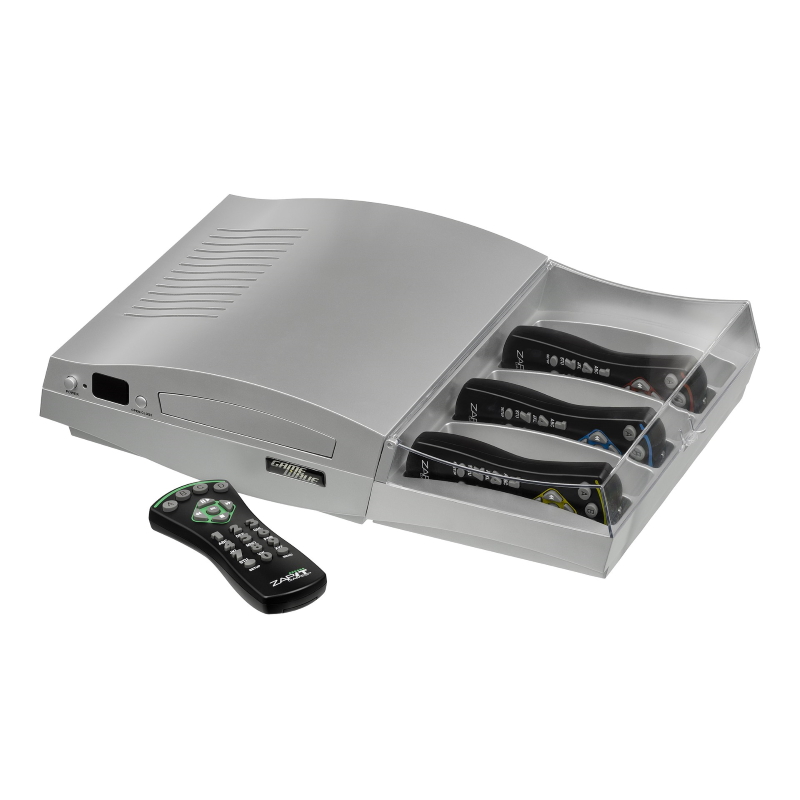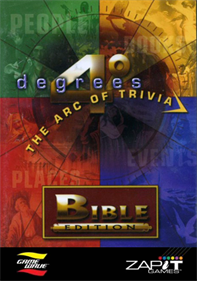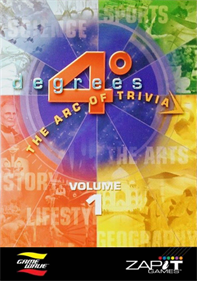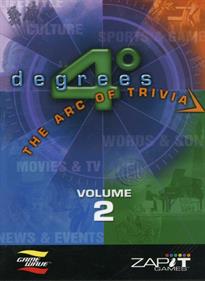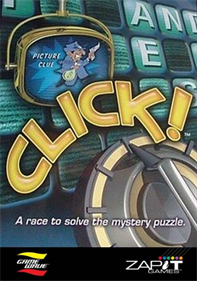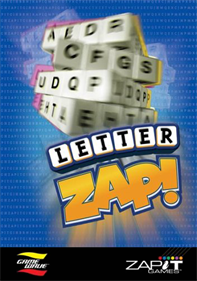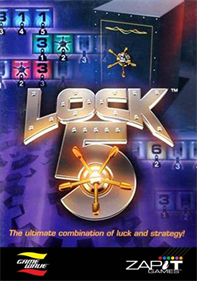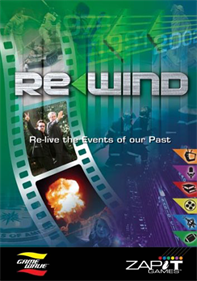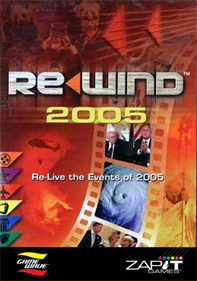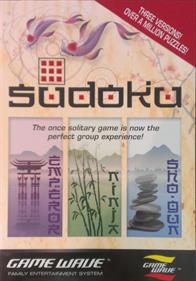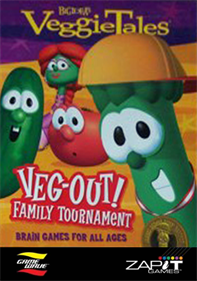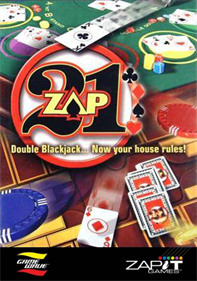|
|
|
History
The history of the Game Wave started in 2003, when Richard Fast, a Toronto toy inventor had the idea of launching a new video game console. Partnering with a few Toronto businessman, Richard launched ZapIt Games, a company dedicated to create, manufactured and distributed a new video game console. Richard had no prior video game experience, but, in this mind, that was not a problem as he wasn’t trying to create a console to compete against the PlayStation 2, the Xbox or the GameCube. Instead of targeting hardcore gamers, he wanted to launch a system that would target families and casual gamer. The initial goal was to create a multimedia system that could play both DVDs and video games for around $50CAD.
ZapIt started by raising the initial capitals amongst the Canadian community, including from the initial investors for the Trivial Pursuits games, another Canadian invention.
As the company had no prior experience in videogames, ZapIt had to reach out to Nytric Limited, an Ontario-based R&D companies that had a pristine reputation.
Designing a low-cost system comes with a lot of challenges. Nytric Limited had to comes up with a design that would allow the device to play video games and play DVD, while keeping the cost low. Processors specific to Windows CE were initially evaluated, but they were too expensive. There were also licensing issues, and significant memory management, RAM and ROM requirements. The team then turned to microprocessors from STMicroelectronics. The problem was, the DVD processors evaluated performed one specific function–namely, operating a DVD player. The designers needed more functionality while still benefiting from the cost economies of the high-volume DVD players.
Not many vendors were willing to open up their software for custom development, partly because most of their support was coming from outside North America. The deal breaker with STMicroelectronics involved licensing. The team then decided try to get support for the Mediamatics 8611. In order to get the proper support, Nytric Limited had to wrote down a PC version of a game to document how the game would work on real hardware. In March 2004, they flew down to National Semiconductor and made the pitch. Although this is unusual for a company to pitch a vendor in order to get the support wanted, this is what sealed the deal. Although the Mediamatics 8611 processor had its limitations, but it also had the necessary functionality. Nytric also got the pricing and support it needed.
The Mediamatics part required an Altera CPLD, the MAX II (Data Sheet, Technical Paper), to marry the processor to the DVD drive. Nytric’s Clarke said this was one of the primary challenges.
“When a Samsung or a Sanyo makes a drive head and there’s an interface chip for that drive head, you need glue logic to convert that data into the standard format that the Mediamatics chip is expecting,” he said.
Gradually, ZapIt had to forge alliances with National Semiconductor, Panasonic, Marcovision and Altera to create the Game Wave family entertainment system.
By October 2004, Nytric Limited already had delivered their first prototype. With these prototypes in hand, ZapIt started to develop games, but with no prior experience, development was going slow. It is at this time that ZapIt finally realized that they needed experienced staff and finally on boarded a few key players with past experience in the video game industry such as Justin Kwok. As the main objective was to create an adorable system, Nytric Limited had to settle on the Mediamatic 6811 processor as the core of the Game Wave. While the Mediamatic 6811 was an excellent processor for video playback, it lacked power and features needed to develop video games that could compete against the current generation of hardware. Although, it had never been the goal to compete with PlayStation 2 for example, the lack of power was very limiting for game development. By the time this became an issue, the hardware development was already completed and it was too late to go back. The developers had to make the best of what they had.
Release
In October 2005, the Game Wave was finally released in Toys’R’Us Canada and the Mastermind Toy store, another Canadian toy chain. Some units were even available for rental at selected Canadian Blockbuster. Jeff Hurst, Vice President Sales and Marketing, managed to sing a deal for the U.S. distribution with Toys’R’Us U.S.A and QVC, and American free-to-air television network specializing in televised home shopping. Released as a price tag of $100CAD, a price doubled their intended target, the Game Wave was still a very cheap multimedia center. With the capacity to play both DVD and games, the console was set to become a bestseller.
But with almost no marketing done for the console, the Game Wave failed to become the blockbuster ZapIt was hoping for. In 2006, Hari Venkatacharya, a well-respected business man from Toronto who was acting as a consultant for Nytric Limited, convinced ZapIt Games that, with his contacts, he could manage to make the console successful. He then became CEO of ZapIt games and started to look at the different option to make the Game Wave a success. The goal was to find new avenues to sell the console. The first idea was to repurpose the console to restaurants and bar so that customers could use it to order their food and play games while they were waiting. Although this was a very interesting avenue, this required a bit of re-engineering. ZapIt finally settled on selling the console as a Christian video game console. The bible belt in the U.S. was an untapped market as many Christians were against video games as they feel it promotes violence. As all ZapIt titles were non-violent, this seems to be a perfect fit. The game was then repackaged to include 4 Degrees: The Arc of Trivia, Vol 1. The company decided to create a new game called 4 Degrees: The Arc of Trivia, Bible Edition to entice this community into buying the Game Wave. ZapIt also signed a deal with Veggie Tales, a popular American Christian franchise of children’s computer-animated series, to create a game on the Game Wave. The future was bright once again.
Demise
Sadly, the Game Wave didn’t catch on in the Christian community and ZapIt was once again in trouble. The Veggie Tales game took a year to complete and during that time, ZapIt was unable to market the Game Wave to the Christian properly. In December 2007, Veggie Tales: Veg-Out! Family Tournament was finally out. Veggie Tales started advertising the Game Wave on their site and even selling it. ZapIt was really hoping that the Veggie Tales franchise would spur the sales of the Game Wave. To this end, they even changed the pack-in title to Veggie Tales. Sadly, even with this mastodon of the Christian children cartoon, the Game Wave didn’t generate enough interest in the Christian community to be financially viable.
In a last ditch effort, ZapIt did a soft relaunch of the console to the general public. ZapIt hired the firm BzzAgent to create a Buzz around the console using multi-level marketing and distributing coupon code reducing the price to $79.99 CAD, but it was too little too late. By 2009. the company had invested 25 million in the Game Wave project and was out of cash. They tried briefly their chance in mobile gaming before having to declare bankruptcy. A few years later, Hari Venkatacharya was accused of $3 million frauds against multiple companies.
A Short New Life
After the bankruptcy, the remaining units ended up with Nytric Limited. It is unknown at this point if Nytric Limited acquired the lot or if they were already in their possession pending payment from ZapIt. In any case, those units needed to be sold, but as most options to sell/repurpose the system in North America had already failed, the solution needed to come from elsewhere. Avanindra Utukuri, CEO of Nytric Limited, decided to change try to liquidate the remaining stock in India. On June 25, 2008, he created a company with Tarun Kapoor and Chandan Singh Ranawat called Game Wave Media Entertainment India Private Limited. The company hired Derek O’Brien, a well-known Indian television personality which hosted the longest-running game show on Indian television at the time: Bournvita Quiz Contest , to create a game specifically for the Indian Market. Dubbed Quiz Konnect, the game was a variation of the 4 Degrees: The Arc of Trivia, but tailor suited for Indian markets. Sadly by the time it took to bring the Game Wave to market in India (2010-2011), the technology was already very old. The Blu-ray format had slowly taken over the DVD, so there was little to no incentive for Indians to purchase a DVD player with limited game capabilities. By 2014, the Indian sales were stopped and with it the last hope for the GameWave.
Games
Only 13 games were released for the console. All titles were sold $24.99 except Veggie Tales: Veg-Out! Family Tournament which retails for $26.99.
A 14th game called Quiz Konnect created for the Indian Market, but although it has been found in the wild, there’s no proof it was commercially available.
Additional Information: Game Wave: Canada’s Game Console | The Art of Failure

